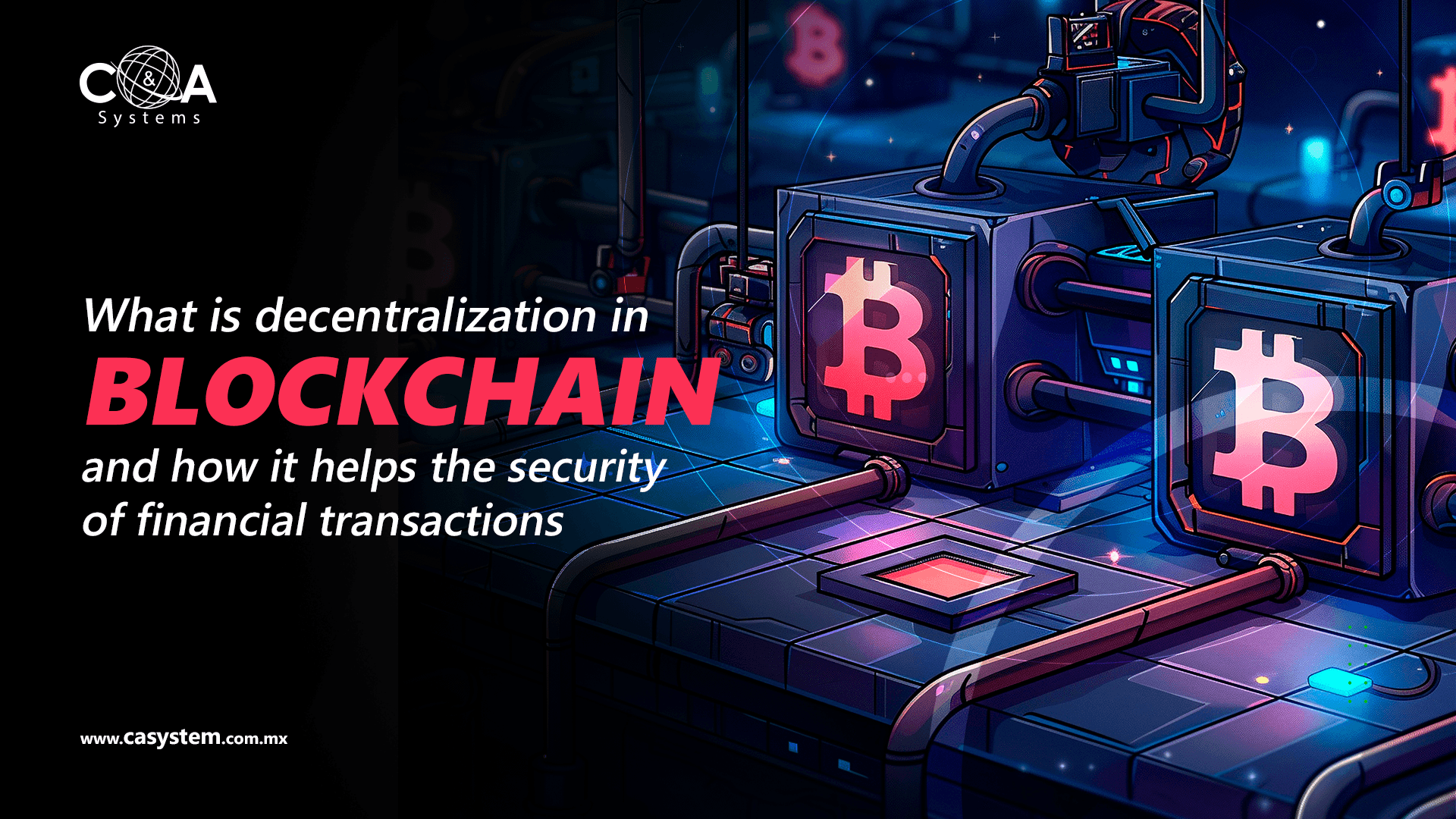The Financial Technology Revolution: Key Trends to Watch in 2024
Today we're going to delve into the fascinating world of financial technology, or fintech, and see how it's transforming the way we manage our money...
2 min read
David Garcia - USA
:
Oct 21, 2024 1:27:57 PM

Decentralization is one of the fundamental pillars of blockchain technology. This concept not only redefines how transactions are managed and verified, but also offers a number of significant benefits in terms of security and transparency. Below, we explore what decentralization in blockchain is and how it contributes to the security of financial transactions.
|
What is decentralization in blockchain |
|
|
|
Decentralization in blockchain refers to the distribution of control and decision-making across a network of independent nodes, rather than being concentrated in a single central entity. In a decentralized network, each node has a full copy of the blockchain and participates in the validation of transactions. This contrasts with traditional centralized systems, where a central authority controls and verifies all transactions. |
|
How does decentralization work? |
|
|
1. Data distribution: In a blockchain network, data is distributed among all participating nodes. Each node maintains a complete copy of the ledger, which ensures that there is no single point of failure. 2. Transaction validation: Transactions are verified by multiple nodes through consensus mechanisms, such as Proof of Work (PoW) or Proof of Stake (PoS). This ensures that all transactions are independently validated and agreed upon by the majority. 3. Immutability: once a transaction is validated and added to the blockchain, it cannot be altered. This is due to the blockchain's cryptographic structure, which links each block to the previous one, creating an immutable chain. |
|
|
Benefits of decentralization for security of financial transactions |
|
|
|
1. Attack resistance: In a decentralized network, there is no single point of failure that can be attacked. To compromise the network, an attacker would have to control most of the nodes, which is extremely difficult and costly. 2. Transparency: All transactions in a blockchain network are visible and traceable. This facilitates auditing and regulatory compliance, as any tampering attempts can be easily detected. 3. Reduced fraud: decentralized transaction validation significantly reduces the risk of fraud. Each transaction must be approved by multiple nodes, which makes it nearly impossible for a fraudulent transaction to be added to the chain. |
|
Financial Applications of Decentralization |
|
|
1. Payments and transfers: Blockchain enables secure and efficient payments and transfers, eliminating the need for intermediaries and reducing costs. 2. Smart contracts: Smart contracts automate and execute financial agreements when certain conditions are met, improving efficiency and reducing the risk of default. 3. Digital Identity: Blockchain can manage secure digital identities, facilitating compliance with regulations such as KYC (Know Your Customer) and AML (Anti-Money Laundering). |
|
|
Conclusion |
|
Decentralization on blockchain offers a robust and secure solution for managing financial transactions. By distributing control and validation of transactions among multiple nodes, security is improved, the risk of fraud is reduced and transparency is increased. As blockchain technology continues to evolve, it is likely that we will see even greater adoption of these principles in various financial applications. |

Today we're going to delve into the fascinating world of financial technology, or fintech, and see how it's transforming the way we manage our money...
Fintech has revolutionized the financial industry by offering innovative and customer-centric solutions. An essential component in this...

Market share is a vital indicator that not only reflects a company's performance relative to its competitors, but also directly influences its...